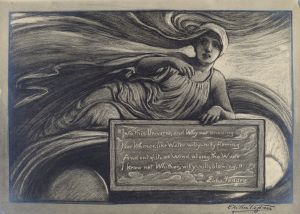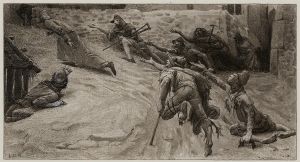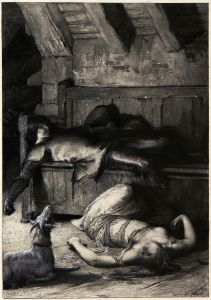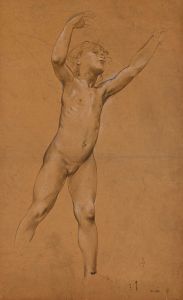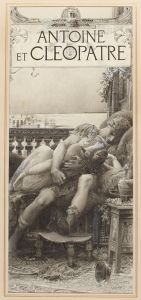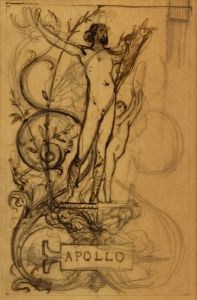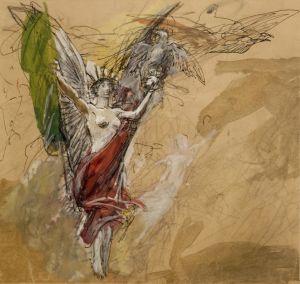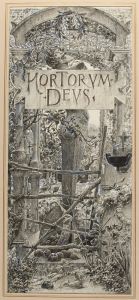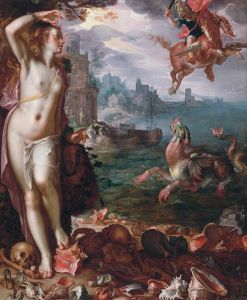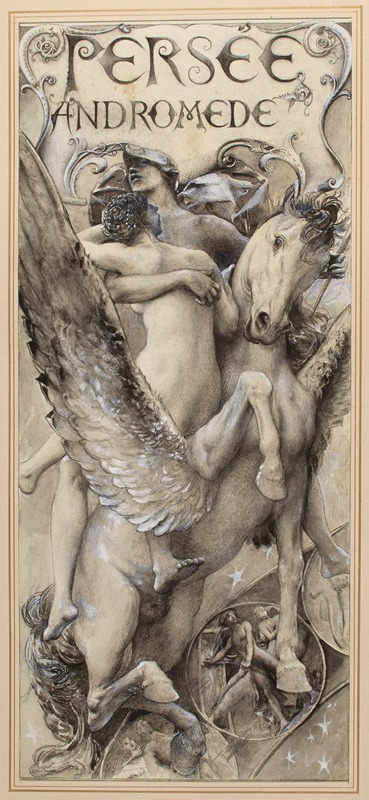
Persee, Andromede
A hand-painted replica of Luc-Olivier Merson’s masterpiece Persee, Andromede, meticulously crafted by professional artists to capture the true essence of the original. Each piece is created with museum-quality canvas and rare mineral pigments, carefully painted by experienced artists with delicate brushstrokes and rich, layered colors to perfectly recreate the texture of the original artwork. Unlike machine-printed reproductions, this hand-painted version brings the painting to life, infused with the artist’s emotions and skill in every stroke. Whether for personal collection or home decoration, it instantly elevates the artistic atmosphere of any space.
Luc-Olivier Merson's painting "Persee, Andromede" is a notable work by the French artist, known for his contributions to the Symbolist movement in the late 19th and early 20th centuries. Merson, born in 1846 and passing in 1920, was a versatile artist who worked in various mediums, including painting, illustration, and design. His works often reflect a blend of classical themes and a distinctively imaginative style.
"Persee, Andromede" depicts the mythological story of Perseus and Andromeda, a popular subject in Western art. The myth originates from Greek mythology, where Perseus, the son of Zeus and Danaë, is a hero known for slaying the Gorgon Medusa. Andromeda, the daughter of Cepheus and Cassiopeia, was chained to a rock as a sacrifice to a sea monster, sent as punishment for her mother's boastful claims of beauty. Perseus, upon encountering Andromeda, is captivated by her and ultimately rescues her, leading to their eventual marriage.
Merson's interpretation of this mythological tale is characterized by his attention to detail and the atmospheric quality of his work. His style often incorporates elements of both realism and fantasy, creating a dreamlike quality that is evident in "Persee, Andromede." The painting likely captures a moment of tension and drama, typical of Merson's ability to convey narrative through visual art.
Throughout his career, Merson was recognized for his ability to blend historical and mythological themes with a modern sensibility. He was awarded the Prix de Rome in 1869, which allowed him to study at the Villa Medici in Rome, further influencing his artistic development. His works were exhibited at the Salon in Paris, where he gained considerable acclaim.
Merson's contributions to art extended beyond painting; he also worked as an illustrator and designer. He created designs for stained glass windows and postage stamps, showcasing his versatility and the breadth of his artistic talents. His work on the Basilica of the Sacré-Cœur in Paris, where he designed mosaics, is another testament to his skill and influence in the art world.
"Persee, Andromede" is a reflection of Merson's fascination with mythological subjects and his ability to bring these stories to life through his art. The painting exemplifies his skill in composition, use of color, and the creation of mood, all of which contribute to the enduring appeal of his work.
While specific details about the painting's creation, such as its exact date or current location, may not be widely documented, "Persee, Andromede" remains an important part of Merson's oeuvre. It highlights his contribution to the Symbolist movement and his ability to merge classical themes with a unique artistic vision. Merson's work continues to be studied and appreciated for its historical significance and artistic merit, securing his place in the canon of French art history.





